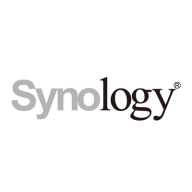

Teradata and Synology DSM both compete in the data management and storage domain. Teradata holds the upper hand due to its robust analytics capabilities, which outweigh Synology DSM's emphasis on smaller scale usability.
Features: Teradata showcases advanced data processing with features like parallel processing and diverse workload management, complemented by comprehensive analytics options including geospatial and temporal analytics. It ensures high performance for complex queries with notable scalability. Synology DSM provides essential file management and data backup combined with a user-friendly setup suited for small to medium-sized businesses, facilitating ease of integration for various applications.
Room for Improvement: Teradata could benefit from refining its high cost and complexity in setup and addressing its limitations with unstructured data and cloud integrations. Enhanced UI and security features are frequently requested by users. Synology DSM, while robust for small enterprises, lacks adequate backup solutions for complex settings and requires improvements in automatic system updates and advanced security responses for larger deployments.
Ease of Deployment and Customer Service: Teradata is integrated mainly in hybrid and private cloud environments, supported by professional yet occasionally delayed customer support, with comprehensive resources despite challenging initial setups. Synology DSM is known for its straightforward on-premise deployment and effective customer service, though its support might not be as extensive as Teradata’s.
Pricing and ROI: Teradata is often considered expensive, yet it delivers substantial ROI for large enterprises due to its powerful analytics and performance. It is positioned as a premium option, apt for advanced analytics. Synology DSM provides more budget-friendly pricing, offering cost-effective data storage and backup solutions for smaller businesses with more basic needs.
| Product | Market Share (%) |
|---|---|
| Teradata | 0.3% |
| Synology DSM | 1.7% |
| Other | 98.0% |


| Company Size | Count |
|---|---|
| Small Business | 8 |
| Midsize Enterprise | 4 |
| Large Enterprise | 1 |
| Company Size | Count |
|---|---|
| Small Business | 26 |
| Midsize Enterprise | 12 |
| Large Enterprise | 49 |
Teradata is a powerful tool for handling substantial data volumes with its parallel processing architecture, supporting both cloud and on-premise environments efficiently. It offers impressive capabilities for fast query processing, data integration, and real-time reporting, making it suitable for diverse industrial applications.
Known for its robust parallel processing capabilities, Teradata effectively manages large datasets and provides adaptable deployment across cloud and on-premise setups. It enhances performance and scalability with features like advanced query tuning, workload management, and strong security. Users appreciate its ease of use and automation features which support real-time data reporting. The optimizer and intelligent partitioning help improve query speed and efficiency, while multi-temperature data management optimizes data handling.
What are the key features of Teradata?In the finance, retail, and government sectors, Teradata is employed for data warehousing, business intelligence, and analytical processing. It handles vast datasets for activities like customer behavior modeling and enterprise data integration. Supporting efficient reporting and analytics, Teradata enhances data storage and processing, whether deployed on-premise or on cloud platforms.
We monitor all Backup and Recovery reviews to prevent fraudulent reviews and keep review quality high. We do not post reviews by company employees or direct competitors. We validate each review for authenticity via cross-reference with LinkedIn, and personal follow-up with the reviewer when necessary.